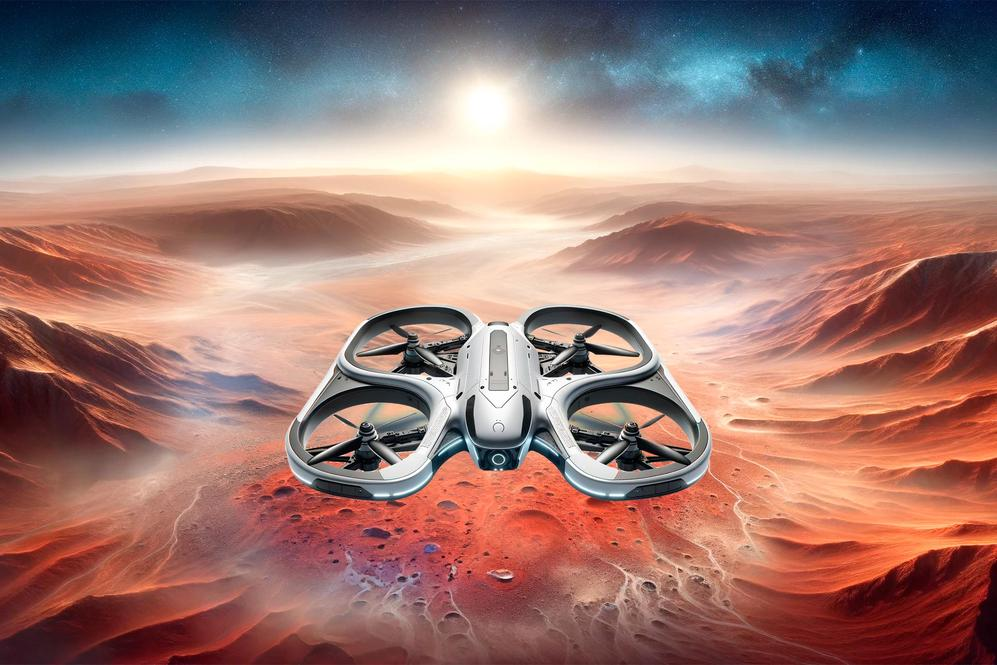Radioisotope generators are suitable tools for small-size rockets and drone swarm power sources.
NASA tests Plutonium 238 in space systems.
NASA plans to use Plutonium 238 as a power source in long-term space missions. The plutonium is a suitable material for RPS (Radio-Isotope Power Systems). The thing is that there are three types of radio-isotope-based systems.
*Traditional RTG (Radioisotope Thermoelectric Generator)
* Light Weight Radioisotope Heater Unit (LWRHU)
* Multi-Mission Radioisotope Thermoelectric Generator (MMRTG).
"Radioisotope power systems, or RPS, enable exploration of some of the deepest, darkest, and most distant destinations in the solar system and beyond. RPS uses the natural decay of the radioisotope plutonium-238 to provide heat to a spacecraft in the form of a Light Weight Radioisotope Heater Unit (LWRHU), or heat and electricity in the form of a system such as the Multi-Mission Radioisotope Thermoelectric Generator (MMRTG)." (ScitechDaily.com/NASA’s New Power Play: Plutonium-238 for Distant Space Journeys)
"Radioisotope power systems (RPS), which are crucial for deep space exploration, use the decay of plutonium-238 for power. The recent shipment of 0.5 kilograms of heat source plutonium-238 from the DOE’s Oak Ridge National Laboratory to the Los Alamos National Laboratory represents a significant step in fueling NASA’s future missions." (ScitechDaily.com/NASA’s New Power Play: Plutonium-238 for Distant Space Journeys)
The NASA concept rocket for long-term space journeys is an interesting thing. There is a possibility that those systems are equipped with particle accelerators that can make antimatter for the thruster. The antimatter rocket can travel in the solar system even if other stars are too far for it. The particle accelerators can also make time dilation if they use some synthetic isotopes that are heavier than plutonium. Those short-term isotopes and elements give extremely high energy for nuclear reactors. The problem is that those isotopes are extremely short-living. That means there should be some kind of time dilation in that system.
The reactor system must keep the temperature of those synthetic radioisotopes like Einsteinium near zero Kelvin, or their existence ends. Einsteinium decays in about 40 days. Time dilation, along with low temperature could extend that time. The system adjusts the reactor's power by changing its temperatures. But the system requires time dilation so that its fuel remains long enough. And then those systems can turn beta radiation (electrons) that the nuclear reactor sends into antimatter. Those missions require new technology, and maybe those kinds of complicated systems are tools that are suitable for those missions.
The image above portrays the drone, that should travel on Mars' atmosphere. Those quadcopters can be so big that they can transport people like astronauts. And those quadcopters can also operate on Earth's atmosphere. The high-flying manned and unmanned quadcopters can be the tools that replace traditional helicopters. So maybe the quadcopter is the standard for the next-generation helicopters that have more abilities than any helicopter before. If those quadcopters use nuclear energy like RTG that gives them virtually unlimited operational range.
The radioisotope generators are suitable tools for rocket engines. The rocket engines can deliver very cold gas like liquid hydrogen to the isotope-generator's shell. And in that version temperature that this system delivers. Vaporizes that very cold gas. And that thing makes an expansion in the rocket chamber. This expansion causes thrust. Also, small-size electric jets and ion engines can get energy from RTG. Those systems can be used in the darkest and coldest places in the solar system.
In another version, the RTG gives electricity to electric resistors. And then those heating resistors expand the liquid gas. That thing makes it possible for the rocket engine to give thrust. The isotope generators can also deliver electricity to the drones. That can operate in the Mars planet's atmosphere. The RTG offers unlimited operational time for small-size drones that can be interesting tools. The small-size drones can operate in Jupiter's and Titan's atmospheres.
And they can dive in oceans of the icy moons. And maybe someday those AI-controlled drones can deliver information from the bottom of the Titan hydrocarbon oceans. The thermal unit or laser and microwave systems can make it possible for those drones to fall through the ice shell of the icy moons and travel to the oceans of those moons. The AI-controlled drone swarms can research large areas of the planets and moons. And that's why they are suitable tools for planetary research.
The new Mars helicopter designs are under test by NASA. The quadcopter and Kamov-type opposite rotating drones can operate on Mars. And other actors can use the same technology to create new high-flying drones and other helicopters. The high-flying drone swarms have great benefits in the civil and military sectors. And maybe the next-generation tank killers are drone swarms that can drop anti-tank missiles on tanks from high altitudes.
Those drone swarms can be delivered using any kind of strategic bomber, rocket, or missile. The drone swarm can wait above enemy airfields and when they see targets like aircraft, those drones can drop weapons on them. The drone swarm can get its mission from the commanders, and then the AI-operated drones can search and destroy those targets independently.
The system uses non-centralized calculations that are developed for animation tools like Renderfahrm. And that thing allows. Those drones can share their calculating capacity and target data. Drones have shown their capacity in the Ukraine war, and that means they are under development in many countries.
https://scitechdaily.com/nasas-new-power-play-plutonium-238-for-distant-space-journeys/
https://scitechdaily.com/historic-first-nasa-uses-two-worlds-to-test-future-mars-helicopter-designs/
https://en.wikipedia.org/wiki/Radioisotope_thermoelectric_generator




No comments:
Post a Comment
Note: Only a member of this blog may post a comment.